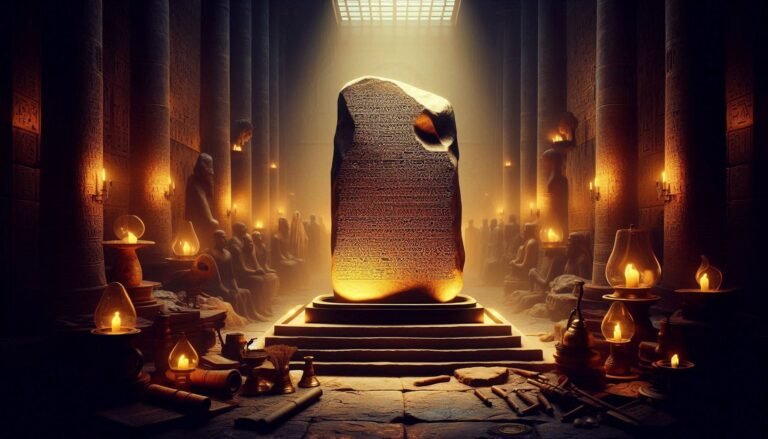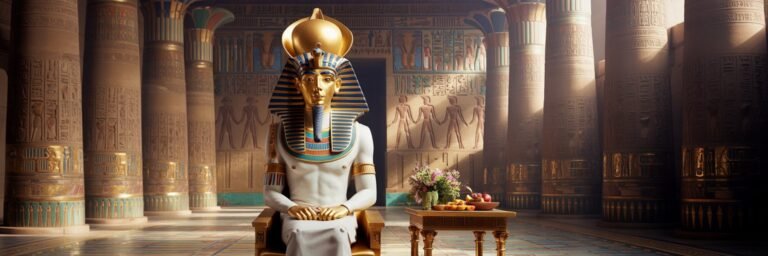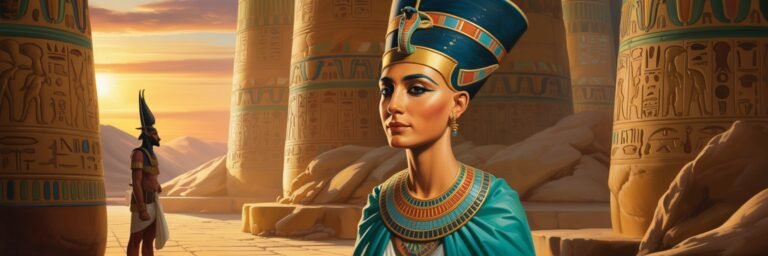INTRODUCTION
The desert sands of Egypt have concealed a cornucopia of historical significance for centuries, ranging from majestic pyramids to the cryptic hieroglyphs that adorn their walls. The birth and decline of ancient Egypt, which unfolded over a span of three millennia from 3100 B.C to 332 B.C, comprises a complex saga of triumphs and tragedies that have left an indelible imprint on the course of human history. Let us embark on a journey through time and retrace the rise and fall of this ancient civilization.
HISTORICAL BACKGROUND
Ancient Egypt emerged as a centralized state in the Nile Valley circa 3150 B.C. under the audacious leadership of Menes (or Narmer), its inaugural pharaoh. Split into two kingdoms, the Red Land of the arid desert and the Black Land of fertile floodplains, Egypt thrived under its pharaoh’s paternalistic governance. The construction of awe-inspiring pyramids—tangible illustrations of the pharaohs’ might—initiated the Old Kingdom era, which is often hailed as a ‘Golden Age’.
This period witnessed the erection of the Great Pyramid of Giza, an architectural marvel that still stands today. The Middle Kingdom saw Egypt burgeon into a powerful civilization capable of ambitious architectural projects and military campaigns into Nubia and Canaan. The ebb and flow of power continued for centuries, culminating in the New Kingdom age, marked by territorial expansion, prosperity, and cultural efflorescence. With the death of Cleopatra in 30 B.C., Egypt succumbed to Roman rule, marking the fall of its ancient era.
THEORIES AND INTERPRETATIONS
The rise and fall of ancient Egypt have spawned various theories and interpretations, both mainstream and alternative. Many historians posit that Egypt’s formidable geographical location buttressed its growth. The Nile’s flooding patterns yielded fruitful harvests, enabling economic prosperity and population growth, which in turn bolstered its political power.
Some scholars enumerate internal unrest, power struggles, and economic woes as principal factors behind the civilization’s declension. However, intriguing alternative hypotheses exist—Harem Conspiracy theory puts the blame on court intrigue for the Old Kingdom’s downfall, whereas environmental hypotheses implicate climate change and subsequent agricultural distress in the collapse of the Old and Middle Kingdoms.
MYSTERIES AND CONTROVERSIES
Amidst its historical grandeur, Egypt conceals an intriguing tapestry of mysteries and controversies, making it a perennial topic of scholarly interest. The most enduring of all is perhaps the construction of the pyramids. Despite advancements in technology and archaeology, the exact method of their construction eludes us. Mainstream historians contend that the massive stones were hauled using ramps or levers, but more imaginative theories propose the involvement of aliens or lost technology.
Controversies also surround the figure of Menes, whose historical existence has been called into question. Theories suggest the name could be a title referring to several individuals or an amalgamation of different rulers’ deeds. Added to this is the ongoing debate over the cause of the downfall of the New Kingdom, with theories ranging from foreign invasions to social unrest and economic collapse.
SYMBOLISM AND CULTURAL SIGNIFICANCE
Ancient Egypt’s culture was characterized by an intricate blend of symbolism and mythology that affected every aspect of life. It was a civilization deeply rooted in the belief of an afterlife, as manifested in their funeral rituals and the creation of elaborate tombs for the deceased. Every monument, every hieroglyph coded a message, a belief, or a value. The pyramids signified not only the pharaoh’s divine status but also the nation’s economic prowess.
Egyptian mythology, with its diverse pantheon of deities, appeased people’s existential dread and brought order to apparent chaos. Gods Osiris and Isis were startlingly human, expressing emotions like love, anger, and jealousy, making them relatable figures for the common people. Ancient Egypt has thus left an indelible cultural footprint, inspiring interest and study to this day.
MODERN INVESTIGATIONS
The allure of ancient Egypt has fostered a bevy of modern investigations, mostly focusing on unearthing hidden crypts, decoding hieroglyphics, or examining human remains. With the advent of non-invasive techniques like ground-penetrating radar and digital reconstruction tools, archaeologists have made captivating discoveries—like uncovering the city of Amarna, or discovering the potential existence of hidden chambers within the Great Pyramid of Giza.
Genetic studies on mummified remains have unlocked significant clues about the ancient Egyptians’ lineage, health, and lifestyle. Aided by technology and interdisciplinary cooperation, modern investigations continue to peel back the layers of Egypt’s past, offering fresh insights into this ancient civilization.
LEGACY AND CONCLUSION
The legacy of ancient Egypt is timeless. Its grand structures testify to its administrative acumen and technological adventurism, while cultural elements like hieroglyphs, myths, and religious beliefs have significantly shaped our understanding of human civilization itself. Modern Egyptology has its roots in the endeavours of historians, archaeologists, and explorers who have worked relentlessly to decipher this civilization’s mysteries.
The varied interpretations, theories and debates about ancient Egypt have shaped contemporary political, social and cultural discourse. This enchanting civilization has indeed left an enduring legacy, preserved in its pyramids, temples, and the ever-mysterious Sphinx.
To conclude, the rise and fall of ancient Egypt remain captivating narratives of human determination, ingenuity, ambition, and resilience. Across the gaping chasm of time, the ethos of ancient Egypt urges us to delve beneath the surface of our own existence, contributing to an evolving dialogue about what constitutes civilization. Like the timeless sands of the Nile Valley, the allure of ancient Egypt will no doubt continue to fascinate generations yet unborn, further enriching our understanding of this extraordinary civilization and its place in human history.






